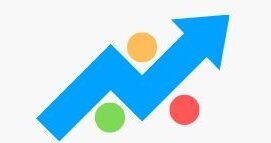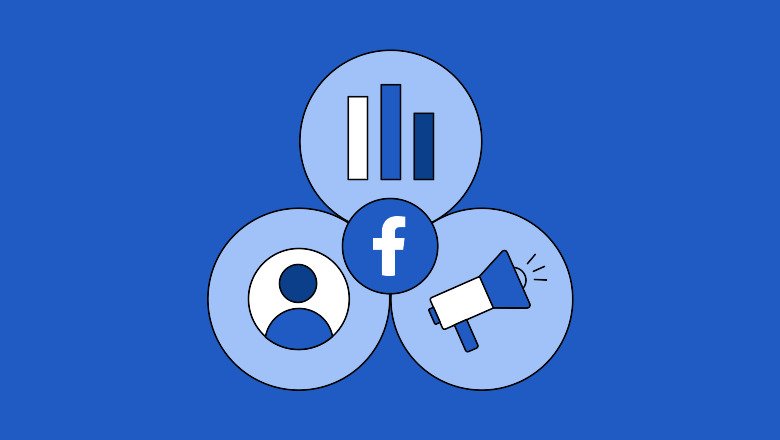How to Run a High-Converting Facebook Conversion Campaign in 2025
What is a Facebook Conversion Campaign?
A Facebook Conversion Campaign is a type of campaign objective within Meta Ads Manager that is designed to encourage users to take a specific action on your website or app. These actions, called conversions, can be:
- Making a purchase
- Submitting a lead form
- Signing up for a newsletter
- Adding a product to the cart
- Booking an appointment
Facebook’s algorithm will optimize ad delivery to people who are most likely to complete your desired action, based on historical data and user behavior.
Pro Tip: Conversion campaigns are the go-to choice for advertisers focused on sales, lead generation, or any trackable result on their website or app.
How Facebook Conversion Campaigns Work
Conversion campaigns rely heavily on Facebook Pixel or Conversions API to track user activity. Here’s a simplified overview of how it works:
- User sees your ad on Facebook or Instagram
- They click the ad and are redirected to your website
- They complete an action (purchase, sign-up, etc.)
- Facebook Pixel records the event
- Facebook uses this data to optimize ad delivery to more people likely to convert
This feedback loop allows Meta’s algorithm to improve your results over time.
Setting Up a Facebook Conversion Campaign: Step-by-Step
Step 1: Prepare Your Website
Before launching a conversion campaign, ensure:
- Facebook Pixel or Meta Conversions API is properly installed
- Key events (e.g.,
Purchase,Lead,AddToCart) are being tracked - You’ve tested everything with Facebook Pixel Helper
Step 2: Create the Campaign
- Go to Meta Ads Manager
- Click + Create and select “Sales” or “Leads” (depending on your goal)
- Under campaign settings, choose:
- Campaign Objective: “Sales” or “Conversions”
- Campaign Name: Use clear naming for tracking (e.g., “Q2_US_Conversion_Shoes”)
Step 3: Set Your Ad Set Details
This is where you define:
- Conversion Event Location: Website or app
- Pixel/Conversions API Source
- Event to Optimize For: Choose an event like
PurchaseorLead - Budget: Daily or lifetime
- Schedule: Start and end dates (optional)
- Audience Targeting: Define Custom Audiences, Lookalike Audiences, or interest-based
- Placement: Automatic or manual (Facebook, Instagram, Messenger, Audience Network)
SEO Tip: Include the keyword “Facebook conversion campaign” naturally in your ad titles and descriptions when relevant.
Step 4: Create Your Ad
- Choose the format: Single image, carousel, video, or collection
- Upload your creative assets
- Write compelling primary text, headline, and description
- Add a strong call-to-action (CTA) – e.g., “Shop Now,” “Sign Up,” or “Get Offer”
- Insert your website URL
- Ensure you’re using UTM parameters for external tracking (Google Analytics, etc.)
Step 5: Publish and Monitor
Once everything is in place, click “Publish.” Your campaign will go through a review process (usually under 24 hours).
Best Practices for Facebook Conversion Campaigns in 2025
1. Use Facebook Pixel + Conversions API Together
With iOS 14.5+ changes and growing data privacy concerns, server-side tracking via Conversions API complements the Pixel and ensures accurate event tracking.
2. Optimize for Lower-Funnel Events
If your campaign goal is purchases, don’t optimize for page views. Optimize for Purchase or AddToCart for better ROI.
Note: If your Pixel is new and lacks data, you might start with broader events like
ViewContent, then shift to more specific conversions as data builds.
3. Leverage Lookalike Audiences
Create Lookalike Audiences based on converters. This expands your reach to new users similar to those who already purchased or submitted a lead.
4. Test Creatives and Copy
Always run A/B tests:
- Image vs. video
- Short copy vs. long copy
- Headlines
- Call-to-actions
Facebook Ads perform differently across demographics, so testing is essential.
5. Use CBO (Campaign Budget Optimization)
CBO lets Facebook allocate your budget across ad sets based on performance. This can often yield better efficiency than manual budget allocation.
How to Track Success: Key Metrics for Conversion Campaigns
- Conversions: Number of tracked actions (purchases, leads, etc.)
- Cost per Conversion (CPA): How much you’re spending for each action
- Conversion Rate: % of users who clicked and completed the action
- ROAS (Return on Ad Spend): Revenue generated divided by spend
- CTR (Click-Through Rate): Gauge ad engagement
- Frequency: Helps avoid ad fatigue
Use Facebook Ads Manager and Google Analytics to cross-verify data and performance.
Common Mistakes to Avoid
| Mistake | Why It Hurts |
|---|---|
| Not verifying Pixel installation | Your conversions won’t be tracked properly |
| Optimizing for the wrong event | You might get traffic but no results |
| No audience segmentation | One-size-fits-all doesn’t work in 2025 |
| Ignoring creative fatigue | Users will ignore repetitive ads |
| Using broad targeting too early | It wastes budget without data feedback |
Facebook Conversion Funnel Strategy
A successful Facebook strategy uses multiple conversion stages:
1. Awareness
- Campaign Type: Traffic or Reach
- Goal: Attract cold audiences
- Content: Blog posts, educational videos, top-of-funnel lead magnets
2. Consideration
- Campaign Type: Engagement, Video Views, Lead Generation
- Goal: Nurture interest
- Content: Testimonials, comparison guides, webinars
3. Conversion
- Campaign Type: Conversion
- Goal: Drive action (buy, sign-up)
- Content: Promotions, urgency-based ads, retargeting
4. Retention & Upsell
- Campaign Type: Conversion or Custom
- Goal: Re-sell to existing customers
- Content: Upsells, loyalty programs, thank-you offers
Advanced Optimization Tactics for 2025
1. Value Optimization
If your Pixel has enough purchase data, Facebook can optimize not just for conversions, but for highest-value conversions (e.g., buyers who spend more).
2. Dynamic Creative Testing
Enable Dynamic Creative to let Facebook mix and match your headlines, images, videos, and descriptions to find top performers.
3. A/B Testing With Experiments Tool
Use Meta’s built-in Experiments tool to create split tests with clear reporting.
4. Use Catalog Sales (if eCommerce)
If you run an online store, link your product catalog and run conversion campaigns using Dynamic Product Ads (DPA).
Case Study: $10K Monthly Revenue with Conversion Campaigns
Let’s look at a fictional example of a Shopify store:
- Product: Home fitness gear
- Ad Spend: $2,000/month
- Objective: Purchases
- Funnel: Traffic campaign (top), Engagement (middle), Conversion (bottom)
After 3 months of consistent data collection, testing creatives, and optimizing for ROAS, the store achieved:
- Sales: $10,400/month
- CPA: $6.75
- ROAS: 5.2x
The biggest drivers of success:
- Strong creative testing
- Lookalike audiences based on
Purchaseevent - Strategic retargeting within 7-day and 30-day windows
Conclusion: Mastering Facebook Conversion Campaigns in 2025
Facebook conversion campaigns are the backbone of any performance-driven advertising strategy. They give you the power to track meaningful actions, optimize for real business results, and scale your brand with data-driven precision.
By understanding how to set up, manage, and optimize your campaigns, you can unlock the full potential of Meta Ads in 2025 and beyond.
Don’t just run ads—run ads that convert.
FAQs About Facebook Conversion Campaigns
Q1: Do I need Facebook Pixel to run conversion campaigns?
Yes, the Pixel or Conversions API is essential to track and optimize conversions.
Q2: What is the minimum budget for a conversion campaign?
While there’s no official minimum, starting with at least $10–$20/day per ad set is recommended for reliable data.
Q3: Can I optimize for purchases if I haven’t had any yet?
It’s better to start with a higher funnel event like AddToCart until you get sufficient data, then switch to Purchase.
Q4: What’s the difference between “Sales” and “Leads” objectives?
“Sales” targets purchase-related actions; “Leads” is for form submissions, bookings, or inquiries.

